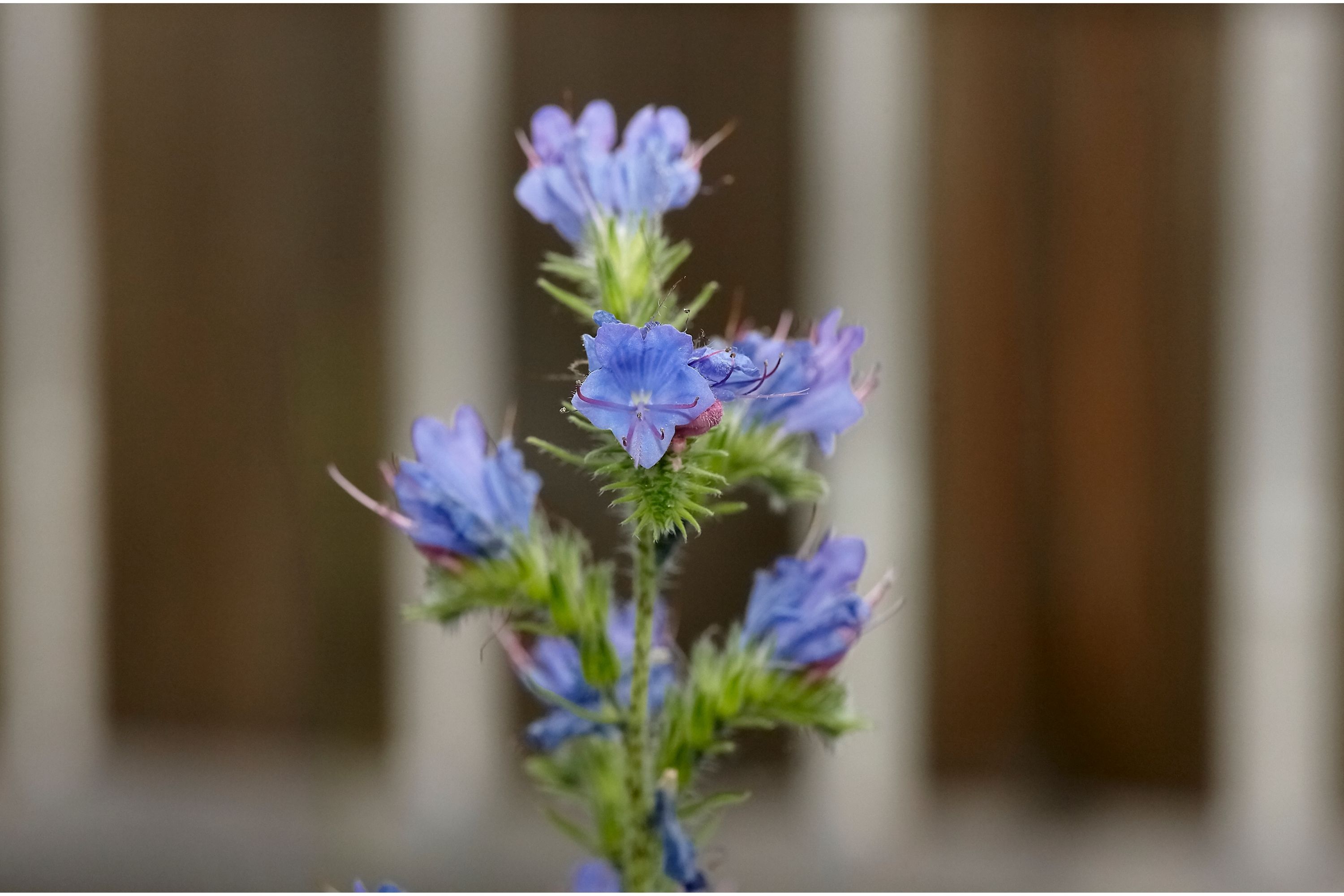Blueweed
(Echium vulgare)

Description
Echium vulgare, commonly known as viper’s bugloss or blueweed, is a flowering plant belonging to the Boraginaceae family. The plant is native to Europe and Asia but has been introduced to other parts of the world, including North America, South America, and Australia. Echium vulgare is known for its striking blue flowers that bloom in the summer months, making it a popular ornamental plant. However, the plant has also been the subject of controversy due to its invasive tendencies in some regions. Description Echium vulgare is a biennial or perennial plant that can grow up to 3 feet (1 meter) tall. The plant has a single, thick stem that is covered with stiff hairs. The leaves of Echium vulgare are lance-shaped, rough to the touch, and covered with hairs. The leaves are arranged in a rosette at the base of the plant and along the stem. The flowers of Echium vulgare are the most distinctive feature of the plant. The flowers are deep blue-purple in color and are arranged in a long, dense spike at the top of the stem. The spike can reach up to 8 inches (20 centimeters) long and is covered with small, five-petaled flowers. Each flower is approximately 0.5 inches (1.2 centimeters) in diameter and has a central tube that protrudes out of the flower. The tube is a pale yellow color and is surrounded by five blue-purple petals that are fused together. The fruit of Echium vulgare is a small, dry nutlet that is enclosed in the remains of the flower. The nutlets are oval-shaped and measure approximately 0.1 inches (3 millimeters) long. Distribution and Habitat Echium vulgare is native to Europe and Asia but has been introduced to other parts of the world, including North America, South America, and Australia. The plant is commonly found in disturbed areas such as roadsides, fields, and waste areas. It prefers well-drained soils and full sun but can tolerate some shade. Ecological Impacts Echium vulgare is known to be an invasive species in some regions, including parts of North America and Australia. The plant can form dense stands that outcompete native vegetation and reduce biodiversity. In addition, Echium vulgare can be toxic to livestock, causing liver damage and even death in some cases. Uses Echium vulgare has several medicinal uses. The plant has been used to treat respiratory ailments such as coughs and bronchitis, as well as skin conditions such as eczema and psoriasis. The flowers of Echium vulgare have also been used to make a blue dye. In addition, Echium vulgare is a popular ornamental plant. The striking blue flowers make it a favorite in gardens and it is often used in floral arrangements. The plant is also a favorite of bees and other pollinators, making it a valuable addition to pollinator gardens. Cultivation Echium vulgare is relatively easy to grow and is tolerant of a range of soil types. The plant prefers full sun but can tolerate some shade. It is best grown from seed, which can be sown in the fall or early spring. The seed should be sown directly in the ground and covered with a thin layer of soil. The plant can also be propagated by division, although this is less common. Conclusion Echium vulgare is a striking plant that is known for its blue-purple flowers. While it is a popular ornamental plant, it can also be invasive in some regions.
Taxonomic tree:







